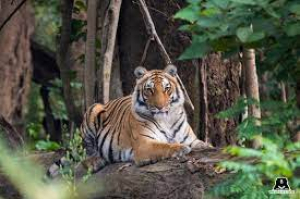 लखनऊ : लखनऊ : Lucknow, June 15 : Under the guidance of Chief Minister Yogi Adityanath, the Forest and Wildlife Department of Uttar Pradesh has successfully concluded its annual wildlife census across the state’s national parks, wildlife sanctuaries, and buffer zones.
The comprehensive census, which began on May 26 2025, was completed on June 14, 2025. The final report is expected to be published by the end of this month.
This year, the census particularly focused on species like the barasingha (swamp deer), blackbuck, chinkara, rhinoceros, gharial, as well as bear and leopard. Additionally, the census covered several herbivores such as deer, sambar, cheetal (spotted deer), nilgai (blue bull), wild boar, monkeys, and langurs.
The state-wide census operation was carried out under the supervision of the Chief Wildlife Warden, with coordination from all regional Chief Conservators of Forests.
The Uttar Pradesh Forest and Wildlife Department conducts a wildlife census every year across all national parks, wildlife sanctuaries, and buffer areas in the state. The primary goal is to assess the current population and health status of wildlife species, which then informs long-term planning and conservation strategies.
Speaking on the census, Principal Chief Conservator of Forests, Anuradha Vemuri, stated that the process began on May 26 and concluded on June 14, 2025. She confirmed that the final results of the census will be made public by the end of June. Reports from all zones have already been submitted by the respective Chief Conservators and are currently being scientifically analyzed by department officials for final compilation.
Census conducted across UP’s national parks, sanctuaries, and buffer zones
This year’s wildlife census included extensive surveying of key species like barasingha, blackbuck, chinkara, rhinoceros, gharial, bear, and leopard. Herbivores such as sambar, cheetal, nilgai, wild boar, monkeys, and langurs were also part of the survey. The exercise was conducted under the supervision of the Chief Wildlife Warden, with on-ground monitoring by all divisional forest officers across the state.
Anuradha Vemuri added that the census teams consisted of forest personnel along with locally trained volunteers. The state-wide census was conducted in three phases — on May 26, June 2 and June 9. The average data from these three rounds is to be calculated and submitted by regional forest officers to their divisional heads by June 16. Based on scientific analysis of this data, the official population figures of various wildlife species will be released. |